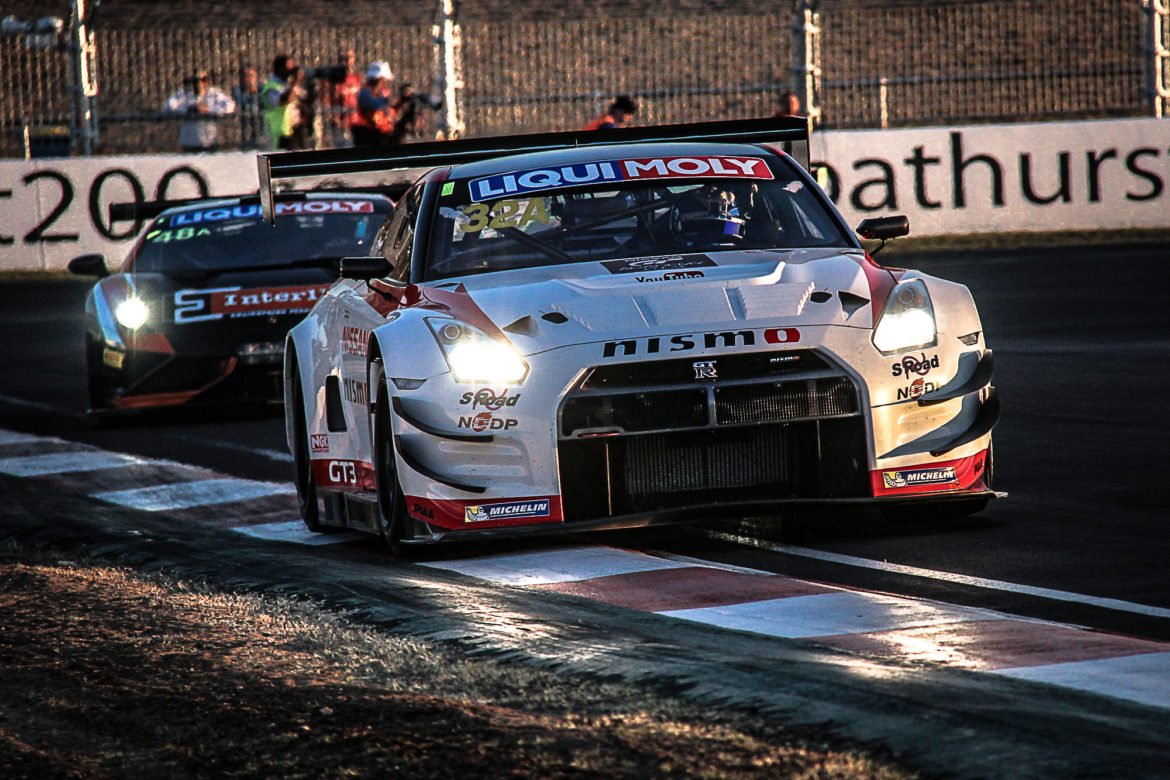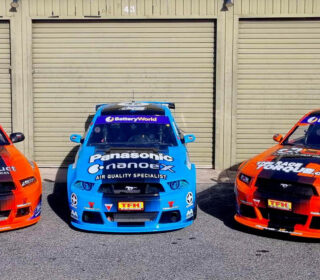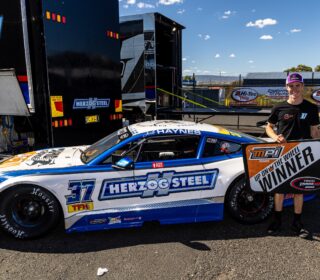SUPERCARS, GT AND THE 12 HOUR SPLIT – PART 1

A MESSY schism between Supercars and the Bathurst 12 Hour in 2014 would ultimately lead to the former buying the latter; but the pathway to that point was a long and winding one. Lewis Isaacs covered the whole saga for Auto Action magazine at the time: here, he recounts the whole, incredible journey for TRT.
WORDS: Lewis Isaacs
The story of the 2015 Bathurst 12 Hour – at least this version of it – begins back in June 2014 in Darwin. At the Hidden Valley round of the V8 Supercars championship, rumour is starting to spread.
There are at least two outfits and a few drivers unhappy the provisional dates for the following year’s pre-season test at Sydney Motorsport Park is on the same weekend at the Bathurst 12 Hour and over two days. The drivers, for all their superhuman efforts behind the wheel, still can’t be in two places at once.
At best, for the teams that would ordinarily there for both, it’s a logistical nightmare. At worst, it’s an act of political subterfuge from V8 Supercars to undermine what, at that stage, was a booming event on the Australian motorsport calendar.
The full story of the last decade of Australia’s International Enduro, the Bathurst 12 Hour, has been documented in a new book called ‘Going Global’. It’s available now by clicking here!
At the time I’m reporting for Auto Action and put together a story for the next week’s mag. This, despite being 2014, is still a digital dark age in the world of the magazine’s owner. The story is sent on Saturday and will sit there until Monday morning when AA’s legendary outfit get in to pump out another magazine on a tight deadline. Eventually, it will hit the stands on Thursday June 26.
Before all of this, the Monday morning after the Darwin races is spent watching the World Cup (Portugal score an injury-time equaliser against the USA) and fuming. Stefan Bartholomeus of Speedcafe, has the story online already. This is typical of him. He’s the leading journo of the small pack that travel and few stories make it past the Adelaide ace. It’s disappointing to be beaten, but the reaction to the story is big and getting bigger.
Theories begin to fly and any notion this is an accidental move disappear. V8s claim they’re trying to avoid a clash with the opening matches of the cricket world cup that is scheduled to be held in Australia from February to March. Publicly, they say it is more of a potential conflict than a race held three hours down the road at Australia’s most renowned circuit that draws manufacturers, drivers and an audience from around the world. Both events are backed by the New South Wales Government through Destination NSW. None of it makes sense. The excuse stinks worse than the adjacent tip at Sydney Motorsport Park.
There’s more to the issue than cars going around roads, however. The 12 Hour had earlier announced a deal with the Seven Network to broadcast the race live in its entirety. At the time, the media giant was in the final season of a low-cost broadcast deal with V8 Supercars before the category would switch to a new arrangement with Fox Sports and Network 10. The politics of the TV world seeped further into the sport, with V8 Supercars CEO James Warburton no stranger to their machinations. In February 2013, Warburton was sacked as the Ten Network CEO after little more than a year in the role. Previously, he had spent eight years at Seven in various senior roles.

On the track, the 2014 Bathurst 12 Hour had been another major step forward for the event. Against the backdrop of a global boom in GT3 racing, forty-four cars entered the race and the final three hours broadcast live on free-to-air broadcaster, SBS.
Those that tuned in saw Australia’s biggest domestic motorsport star Craig Lowndes lead a Maranello Motorsport Ferrari 458 to the chequered flag, 0.4 seconds ahead of Maxi Buhk in a HTP Motorsport Mercedes SLS. The tight finish sealed an emotional win for Maranello Motorsport, months after its long-time driver Allan Simonsen was killed at the Le Mans 24 Hours.
It was thrilling racing at the country’s top circuit in an extraordinary category of cars.
Locally, the Bathurst 12 Hour and Australian GT Championship were both experiencing hand-in-hand growth in both competitors and supporters in stream with GT3’s success. The class of cars had a wave of manufacturer support, a growing field of aspirational supercars and parity issues were resolved through Balance of Performance.
Despite the contradictions at the time and finger pointing at the Cricket World Cup, court documents released in 2017 would reveal internally V8 Supercars saw the rise of GT3 racing as a threat.
In the case between V8 Supercars Holdings Pty Ltd v Sanpoint Pty Ltd (owned by the family trust of former racer and team owner Dean Fiore), communications between V8 Supercars and its owners, private equity investment firm Archer Capital, highlight the concern from the local category.
In late January 2014, an email from Tim Miles, a racer and experienced business advisor to the category, to Archer partner and V8s board member Rishabh Mehrotra addressing the future of V8 Supercars.
“In summary, whilst these two key risks exist at the same time, there is a very real danger that AGT will (inadvertently) grow as it will continue to attract the stars. In parallel, teams are ever more likely to move to AGT – as it makes better business sense (and the international flavour of the series makes it seem like more fun).”
– Email from Tim Miles to then-Supercars board member Rishabh Mehrotra, January 2014
Among the detailed message was a financial breakdown for the challenging operating costs to compete for V8 teams and the emerging challenge from GT3 racing through the Australian GT series (AGT).
On June 3 2014, just weeks before the calendar details leaked, Warburton emails Greg Minton at Archer identifying GT racing as a risk to V8 Supercars’ business.
On the Monday after the story had broken, Warburton emails Archer’s Mehrotra, writing: “GT’s have approached 4 of the leading Teams to run in their category next year, my view is that it is a wait-and-see approach as they would prefer to do V8 Supercars, however, the GT’s and to an extent Seven are actively pushing to hurt us and if they see the sport as fragile they may get some traction…”

For the next few months the story simmers along.
Nissan, which became the first new manufacturer to join V8s in over 20 years with the introduction of the Altima in 2013, is pushing for a solution. After investing heavily in its factory Supercars squad, the brand also made a big international push at the 2014 12 Hour with its GT-R. Two-time Bathurst 1000 winner and 2006 V8 Supercars champion Rick Kelly joined Alex Buncombe, Katsumasa Chiyo and gamer-turned-racer Wolfgrand Reip, and though the car ended in the fence, they promised to be back.
After the potential calendar clash emerged, then Nissan Australia CEO Richard Emery works to resolve the conflict for the manufacturer. “We’re still talking,” he says at the time. “They (V8s) are not listening as much as I would like.”
Erebus Motorsport, winner of the 2013 Bathurst 12 Hour and the team that brought Merecedes to V8s, is also displeased at the impasse.
Ryan Maddison, who is Erebus CEO in 2014, tells Auto Action “It would be nice to know what is happening for the V8 test day until we solidify our plans. At the end of the day, Erebus is looking to compete solidly at the 12 Hour next year.”
Meanwhile, as the discourse around the topic grows increasingly heated, the Confederation of Australian Motorsport (CAMS) reveals its hands are tied in finding a resolution.
“Legally, we don’t have the power; it is as simple as that,” CAMS CEO Eugene Arocca tells my former AA colleague Cameron Kirby. “We can offer our view and we have spoken to both categories and said ‘Try and work it out, gents’.
Arocca tries to spin the conflict, adding: “The juxtaposition is, of course, what a wonderful position for Australian motorsport to be in, where two separate television channels are televising two separate events three hours apart from each other over a weekend.
“The glass-half-full person would say, ‘Well, this is a great competitive environment for motorsport to thrive.’”
Most of that optimism evaporates from the glass on September 12 when V8s confirms its 2015 calendar, including the pre-season test.
“It is a grand season opening launch, the style of which has never been seen in our sport,” Warburton says with the calendar announcement.
“It’s about giving the teams more time for the most important test of the year and at the same time allowing maximum interaction and engagement with fans.”
There’s a strong element of disappointment in the paddock.
In a since-deleted Twitter post after the confirmation, the usually quiet Shane van Gisbergen feels compelled to speak up, writing: “Gutted about the V8Supercar calendar the 12 Hour clashing. Politics….”
The Kiwi later addresses the missing missive, saying: “I got told off for what I said before … I just love driving but I have said it before; V8s is the priority. That is the championship I want to win. You’ve got to be at the Test day, both days, so we can’t sneak up there on Sunday.
“Al the guys who raced in that [12 Hour] race love doing it. Hopefully, they can work out all the politics so we can go racing in the future, but it looks like next year is out.”
The weeks that follow are filled with talk of anger and letdown. But there are certain areas V8 Supercars excels at compared to other spots. Access has long been one of them.
I get the chance to ask Warburton directly about the clash.
AA: One thing that has caught attention is the Supercar test day clashing with the Bathurst 12 Hour. Is there still any wriggle room available?
JW: I think I’ve said everything about the Bathurst 12 Hour. We seem to be copping a lot for the fact that we had six drivers who were there last year. We’re launching our season with a brand new partner; it’s going to be a pretty big weekend for us. It’s unfortunate that there’s a clash in dates, but that’s just the way it is.
AA: It’s not just six drivers, though, it’s the fact that there are two events in reasonably close proximity. There are officials who would like to be at both and your event is on pay-TV and the other is on free-to-air…
JW: Ours is on pay-TV with a free-to-air highlights package as well. It’a a roll-out for the weekend … I’ve said everything I’m going to say. It’s an argument I’m not going to win. Hopefully it’s a one-off year in terms of the Cricket World Cup and the Asian Cup (football) and those types of things and where it’s at. Ultimately, we’ll see what happens.
Before February rolls around, resolutions are still being sought by some competitors.
A final nail in the coffin arrives with an update to the SupercarsOperations Manual where the definition of a primary driver, is now “…the Driver that a Team nomintes in its Series Registration Form as the Driver of its Car at all Meetings and compulsory Test days and at any Season launch events.”
The news is met with disappointment from Nissan. Murmurs suggest the Japanese manufacturer was contemplating ferrying Rick Kelly between events in a helicopters, such was the company’s dedication to the event.
For now, the carmaker is split.
The shine is taken off V8 season launch, while the 12 Hour has become the unwitting underdog.
Despite the drama and distraction, the conflict is a sideshow to the race’s preparations. More cars and drivers enter from around the world. A factory Bentley effort joins factory-supported entries from Audi. There’s a host of Ferraris, Lamborghinis, Mercedes, Aston Martins and a McLaren in Class A. The classes are bulging with entries.
The 12 Hour, despite being off-limits to V8 teams, drivers and personnel is doing just fine.
The drama though, is only beginning.
ABOUT: LEWIS ISAACS
Lewis Isaacs is a multimedia producer, editor, shooter and writer based in Sydney, Australia.
His media career began at ACP Magazines, writing for Auto Action, Rugby League Week, Top Gear and Motor. He has since developed as a digital and video producer, with his work featuring on The Guardian, SBS, The Sydney Morning Herald, ABC, Fox Sports and more.
For more information, please check out his website here.







